[Jimbaux is a lost bayou rambler.]
The Water Is Coming, And There’s Nothing That Can Stop It
Perhaps the greatest folly of man is to think that he can somehow control nature. The oh-so-resilient people of Cajun Country – home for Jimbaux regardless of where he is – will survive, but from Hurricane Gustav to the BP oil spill, they’ve already endured enough once-in-a-lifetime events in the last few years.
At first, I chose a darker song for this post, but knowing of the Cajun resiliency, I changed it to what it is now.
Many Places I Know and Love Are In Danger
Earlier this afternoon, as had been feared and expected for at least a week if not many weeks, the floodgates of the Morganza Spillway were opened for the first time since 1973 and only the second time ever. Thousands of homes, structures, roads, and farms will be flooded in order to spare the more populated areas of Baton Rouge and New Orleans from floods of biblical proportions. While some of my fellow Cajuns are indignant about this, most of them accept this as their fate, growing up for a lifetime in the area, knowing for that the better part of a century that the Atchafalaya River wants to be the Mississippi River. The only reason that it isn’t is human intervention.
My closest family members – parents, siblings, grandmothers, and aunts and uncles – are safe, as they live on high ground, on and near the floodplain. Their homes are safe, but they’ll undoubtedly see many effects of this. Some schools have already closed for the rest of the school year.
Now, I will show some of my pictures in that area.
Welcome To Morganza
The hamlet of Morganza is merely the location of the control structure, the beginning of the spillway. More populated areas farther down the Atchafalaya are of greater concern to most, but here are a few Morganza pictures.
This is a view westward along the control structure. The large crane that you see in the foreground moves across the length of the control structure to open the gates, allowing water to flow through. Notice the lack of water in the field in the left/downriver side of the structure in the below picture.
A look to the left in the above picture reveals the mainline track of the New Orleans Subdivision of the Kansas City Southern Railway.
This is the view westward on the western side of the control structure.
Right now, this highway is closed because of the gate-opening. I took the above pictures on 18 June 2008.
Much Farther South
And, now, I’ll show you some places I know and love very well. All of the below pictures were taken on 1 March 2006, and the first one was not taken by me but was taken of me! The RailGoat and I were out foaming at Berwick Bay that day, and he got this shot of me as we waited for two westbound trains to cross the BNSF Railway’s Atchafalaya River drawbridge connecting the communities of Berwick and Morgan City.
Yes, that’s the picture on the Facebook fan page. Where I’m sitting will soon be underwater, and the water is expected to get high enough to touch the underside of the bridge spans. Eventually, as the water rises, rail traffic here will be annulled. The floodwater is expected to get here by Tuesday.
Trains
The first of the two trains we were waiting on that day was the Union Pacific Railway’s LLS51, the Morgan City Local who had to cross the river merely to use the siding to reverse direction and head back east.
The below picture is not a great picture as far as photography is concerned, but I present it for the purpose of showing that the floodwater is not expected to reach the top of the floodwalls seen here. Notice how the track cuts a few feet deep into the floodwall. The concern, however, is the strength of those floodwalls.
Anyway, that was the LLS51. We were really waiting on Amtrak’s Sunset Limited to cross. This is one of my favorite fall-winter shots in the area.
Again, the floodwaters are expected to reach the span of the bridge (but not completely submerge it) in a few days.
Afterward in Berwick
The RailGoat and I then went to Berwick to photograph the LLS51 – or, more specifically, the locomotive of the train – run around the train so it could go back east. At this time, the tracks at Morgan City and Ursa were full, necessitating the train’s crossing of the Atchafalaya River to runaround its train.
Note in the picture the bridge structures in the background and also the floodwall. If the floodwalls fail to keep the water out of Berwick, the houses on either side of the track will flood, even though the track itself will likely stay dry.
The Clock Ticks . . . In Many Ways
The clock is not only ticking for the inevitable arrival of the floodwaters in the coming week, but also on the fate of this area itself. Thanks to the efforts of mankind, in about a thousand years, most of this land, merely alluvial deposits from the river, will likely be reclaimed by the sea. It’s inevitable. Meanwhile, the resilient people of the land – from whose stock I come, for better and for worse – are experiencing yet another once-in-a-lifetime event, just like Hurricane Gustav and the BP oil spill. So many emotions come to mind, and, yesterday, I briefly allowed myself to shed some tears over the issue, remembering, though, that acceptance is truly a virtue, which is why many back home are handling this so well, even as they, as my father says, “empty their homes of all earthly possessions.”
Nature will prevail, but we will all survive.
Jimbaux
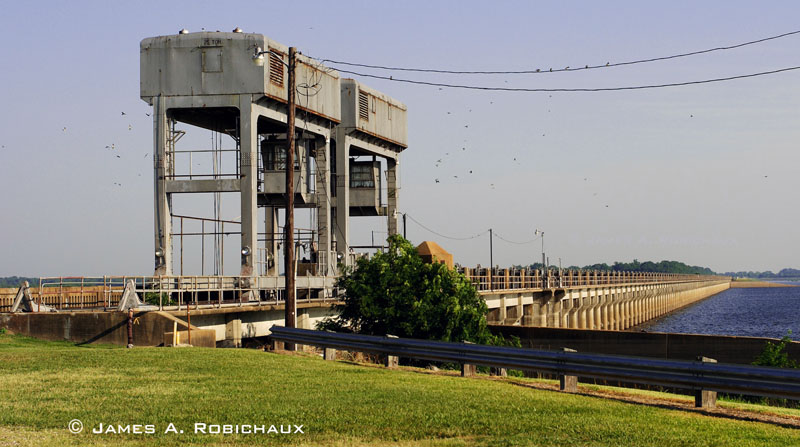
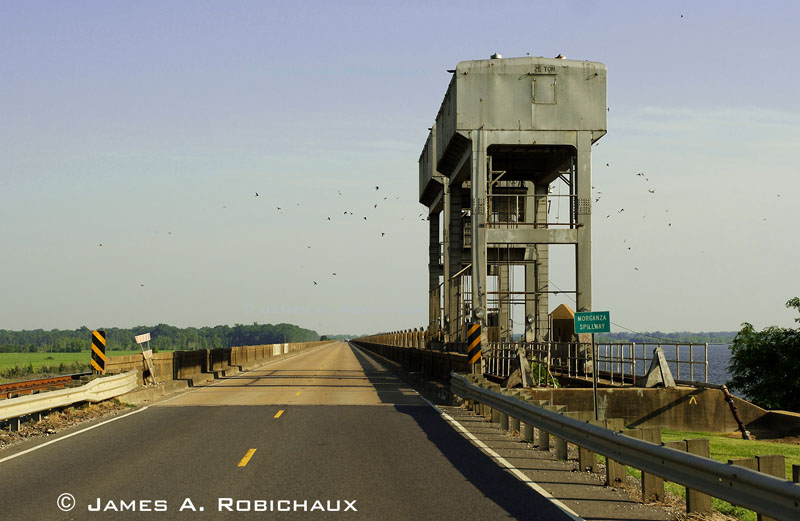
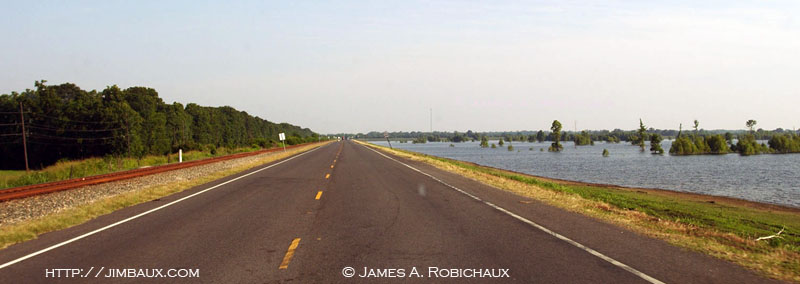
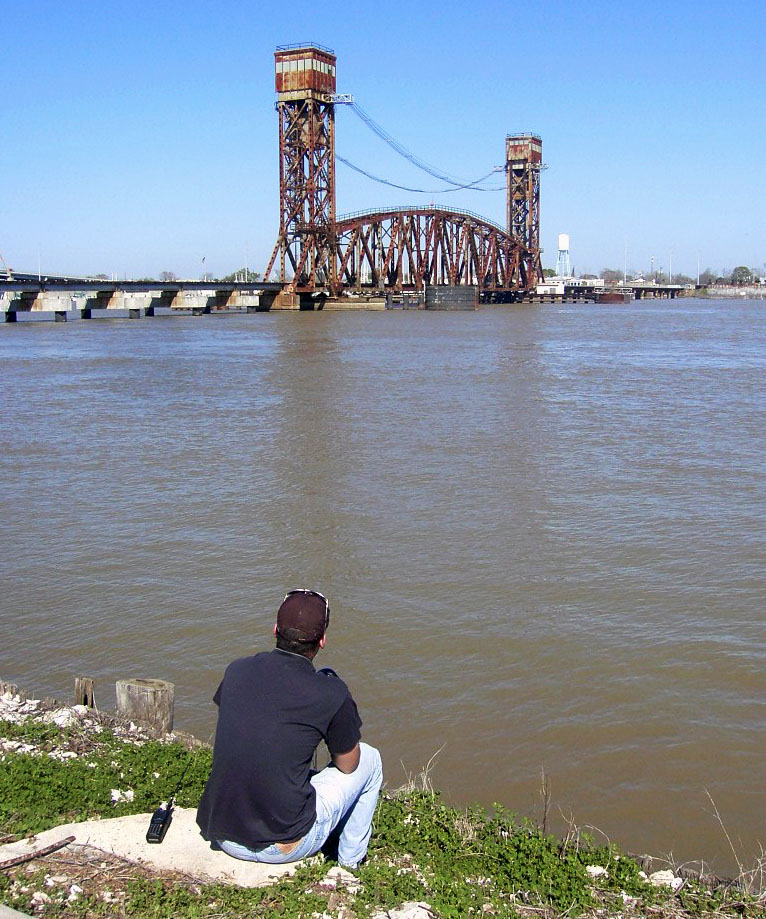

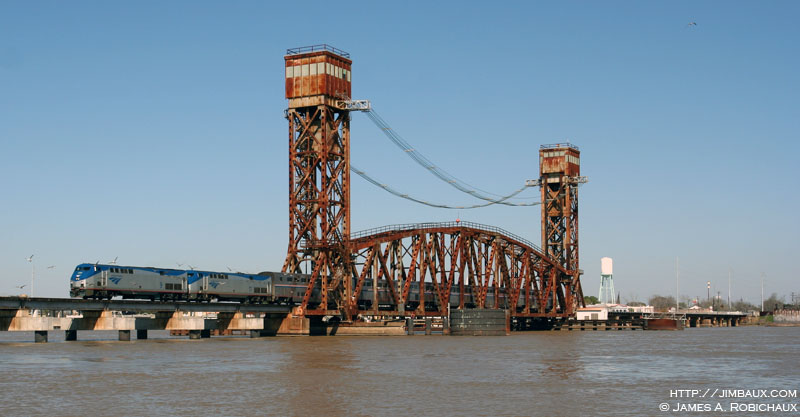


{ 6 comments… read them below or add one }
Well written James, but as a geologist familiar with the area, who well remembers the 1973 flood and the damage done to the basin, it will take a long time to recover, and some areas never will (in our lifetimes). The flip side to this is that the flood will create a lot of new land at the mouth of the Atchafalaya River, and at the mouth of the Wax Lake outlet channel east of Patterson. In 1973 the flood then deposited 7 feet of silt in Atchafalaya Bay and East Cote Blanche Bay, and that coupled with the fact that since that time 30% of the Mississippi flow has been diverted to the Atchafalaya has begun to create land where previously there was none. This flood should actually speed up that process in Atchafalaya Bay and East Cote Blanche Bay thus helping to reclaim land lost to the gulf. The real reason that land continues to be lost in south Louisiana is that the Mississippi is leveed all the way out to where it dumps its sediment load into 600 feet of water and that sediment is no longer building up the land on either side of the river when it floods. This flood will deposit lots of sediment in the basin, and the bays actually building them up and protecting them from encroachment by the gulf.
Wonderful photos. What we have come to expect from Jimbaux is only the finest in photography.
But let’s not be too quick about the sea reclaiming our alluvial land. I am sure the predictions of our disappearance in lower Louisiana are far too hasty. Here is why I believe so.
Many years ago my geology professor made a startling statement at the beginning of a class. To paraphrase him – build a dam and you sign its death warrant, build a levee and eventually you’ll render it useless. I’ll leave the dam discussion for another day, as the levee protection is the timelier topic.
Levees prevent nature from doing what nature wants to do by natural overflow in high water seasons. In systems like the Missouri-Ohio-Mississippi, etc., the rivers remove water and the eroded sediments construct deltas. Ah, blessed Louisiana – the geologically newest state with the richest soil! Thank you, America!
That is happening less and less as we have more events like the floods in Des Moines in 2008. Water more often back washes the levee systems. While this is happening in the north, in the lower river system we have raised the levees higher and higher and extended them farther out in the delta restricting their size to force out sediments. This keeps shipping channels open like Southwest Pass, thus saving New Orleans.
The normal spring alluvial deposits have been denied to our greater delta building, which would include the Atchafalaya basin. We have frustrated the waters of the rivers by making the journey longer and longer when water seeks the quickest route to the gulf. From the Morganza Spillway to the gulf it is almost 200 miles shorter via the Atchafalaya over the Mississippi.
Nature may be teased but never fooled in the long run. What is happening now is only another step in what will eventually happen, the eventual capture of the Mississippi distributing water via the Atchafalaya. The Corps plugged the scouring and undermining of the Old River structure in the nick of time in 1973, but it should have been a warning that the game can’t be played forever. We are the fools for tampering with it and setting ourselves up for these man-made disasters.
Louisiana will build again when man stops interfering with Mother Nature. No one ever flooded as bad as now until we tried to “control” things. We are the lords of our thoughts, but we are the victims of our own decisions.
There is a lesson in this whole scenario, but human nature and Mother nature can’t seem to agree. Everybody knows who will win in the end.
gustav. BP. now this. good grief.
i moved to baton rouge in 2007 to go to law school. i’m a gulf-coast kid by extraction – alabama, to be specific – so i already kinda dug the place. after three years in louisiana, i fell in love. even though i live in the DC metro area now, part of me is still there. so heartbreaking…
I never realized that LLS51 crossed over to Berwick to turn around. I thought that the siding in MC allowed that process. I have some pictures from 73 and will try to take more this year at the same locations to make a comparison. If the levees do their job around the tri-city area, we should thank each person that works at the Berwick and Bayou Boeuf locks. It’s their dedication to inspection and maintenance that will make this a success.
Joey, like I wrote in the article, at the time these photos were taken, the tracks in Morgan City and Ursa were too clogged with cars (perhaps MofW stuff) for the run-around to take place. Part of the reason I was there that day was to photograph the unusual presence of the LLS51 on the bridge.
I really love these photos!